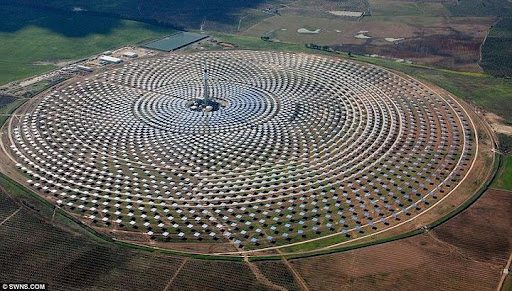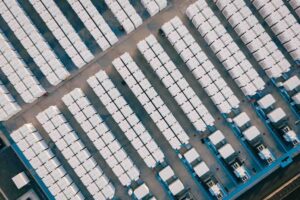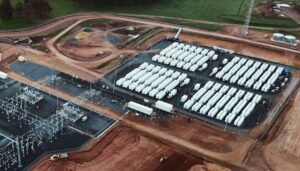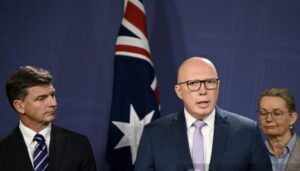The Greens Party has unveiled an ambitious new document that outlines possible pathways to turn Western Australia – one of the most energy-intensive states in the world – into one where its stationary energy needs are powered 100 per cent by renewable energy sources in less than two decades.
The Greens offer two principal scenarios to transform the coal and gas-dependent grid known as the South West Interconnected System (SWIS), which includes the capital Perth and the most populous regions. The first involves a heavier reliance on solar thermal and storage technologies currently deployed in Spain, the US and elsewhere, while the second relies more on currently cheaper technologies such as wind energy and solar PV. Both are supported by bio-mass and pumped hydro.
According to Scott Ludlam, the WA-based Senator whose office anchored the report with the help of specialist consultants, the plan seeks to make two important points – one that it is feasible, and two, it will not cost much more than business as usual (BAU).
Indeed, even using somewhat conservative technology cost forecasts for the various forms of solar, and to allow for a safety-first approach to capacity requirements, the study concludes that the levellised cost of electricity in the various renewable scenarios ranges from $208/MWh to $221/MWh by 2029. (We go into detail further down)
The levellised cost of electricity in the BAU case is not much cheaper – $203/MWh. While it has lower up front capital costs – $20 billion vs $60 billion, the balance of the BAU scenario bill will be paid in fuel costs, which for gas and diesel customers in WA is already proving expensive and forcing those on isolated and remote areas in particular to already consider solar alternatives.
Ludlam says the plan was released in the context of both the federal and state election campaigns.
In the federal context, it was because the Coalition has vowed to ditch not just the carbon price but also the Clean Energy Finance Corporation, one of the key initiatives of the Greens into the negotiations for the carbon price. Ludlam, like most in the industry, says an institution like the CEFC is vital to build the solar thermal power stations and bring down the costs. WA is considered to be one of the best places to do that and the most cost effective, given the excellent solar resources and the high comparative cost of grid electricity.
The second is the state election, to be held in a few weeks, where the politics are even worse. The WA coalition government has ditched the previous government’s emissions reductions targets, slashed its climate change unit, wants even the Renewable Energy Target to be dumped and is committed to up to five new coal-fired generators.
Its refurbishment of the dirty Muja coal fired power station is blowing out in costs, and its capacity market is encouraging the construction of consumer-funded diesel fuel peaking generators that may never even get switch on. Even WA Labor leader Mark McGowan said on Sunday he did not support the Federal government’s carbon price, although he did support an emissions trading scheme.
“This is a make or break year for us,” Ludlam says. “We have got an investment vehicle up and running that could get some of these plants built. But if it is demolished, that will set us back a long way.
“This study demonstrates that it is possible: the only barrier to a masssive increase in clean energy here in Western Australia, is political inertia.”
The document was drawn together by Ludlam’s team, but the detailed technology scenarios were put together by an engineering team from Sustainable Energy Now, and drew on previous work by the likes of CSIRO and Beyond Zero Emissions.
First of all, like similar scenarios drawn up by international groups such as the International Energy Agency, and the Prime Minister’s own task force, it draws heavily on energy efficiency, and estimates that one third or the anticipated energy demand in 2029 can be removed through smarter ways of using energy.
As for the production of energy, the first scenario relies on large-scale solar concentrator fields with stoage (3,500MW) to provide the bulk of the dispatchable electricity on the grid with the balance being provided by large-scale dispersed wind generators, solar PV and a smaller number of biomass, wave and geothermal generators. (see graphs below)
Backup electricity in the event of several consecutive days of low wind and solar incidence would be provided by biomass co-firing at the solar plants, pumped hydro storage and a small number of mid-tier biomass plants. Its estimated capital costs were $62 billion, translating into an LCOE of $221/MWh.
The second scenario relies more on more wind energy (3,000MW) and more solar PV (3,000MW) meeting peak demand, backed up by biomass and pumped hydro. Its capital cost estimates are put at $56.9 billion, with an LCOE of $208/MWh.
The third scenario is business as usual, without carbon capture and storage or energy efficiency/waste reduction gains. It assumes that Western Australia develops a heavy reliance on on-shore gas and continues to build coal-fired power stations. The capital costs here are estimated at $20.6 billion, but the 16 years of additional fuel costs takes the LCOE to $203/MWh. This figure does not include the cost of duplicating the Dampier to Bunbury Natural Gas pipeline, or the lost agricultural productivity due to unconventional gas fracking, or any of the associated costs of unmitigated climate change.
One thing that struck RenewEconomy was the conservative estimates on technology costs. The calulations are made with a levellised cost of wind energy at $91/MWh in 2029 for wind – yet Bloomberg New Energy Finance last week said wind energy was already around $80/MWh in Australia, cheaper than coal and gas.
Likewise, the average LCOE for solar thermal with storage is estimated at $187/MWH – far above the Australian Solar Institute and CSIRO estimates of around $100-120/MWh by 2020. Solar PV is put at $147/MWH, while Ratch Australia, which is looking to replace the Collinsville coal fired power station in Quenssland with solar PV, estimates its cost at $120-$150/MWh. The ACT solar auction – where a 20MW plant is to be built – puts the cost at around $150/MWh now.
And, the report notes, there is potentially a lot of redundant capacity, with Ludlam says the engineers took a conservative estimate on how much capacity will be needed to ensure constant supply.
“This is a worse case scenario,” Ludlam says. He admits that even the latest Bloomberg New Energy Finance analysis, which shows wind energy costs already below coal and gas in Australia, and others following soon, “took him by surprise.”
“The plans we have mapped out are price sensitive and they will need a lot of work. don’t buy the idea that it is not possible, or that the Greens will not be able to influence this. We have the CEFC, we are in a position to do these things.”
Here are some graphs you may find interesting.
The first is the technology deployment and costs in the first scenario, which relies most on solar thermal (CST) and storage.
The second is where these renewable energy plants may be deployed ….
And the last is where WA is heading right now …..













